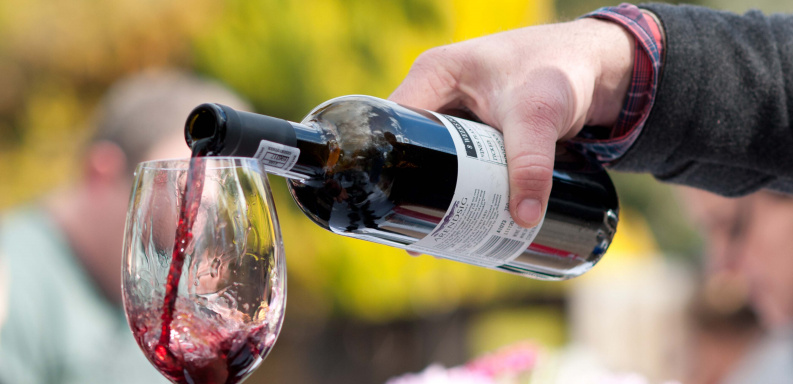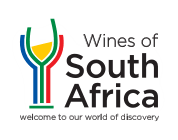Wine is complicated, but what can be done about this?
By Jamie Goode | 27th March 2025
I often think back to when I was just beginning to discover wine. My first impression was that wine was really complicated. Wherever I went to shop for wine, whether it was a specialist wine shop, or a supermarket, I was faced with this wall of wines and my feeling was that this is something that, as a novice, is quite difficult to navigate. I came away feeling a little bit confused, because I found it very hard to make a choice, and in the end I made the choice based on the label design, or a familiar name that I recognised. It was a semi-lottery. And this lottery was made more tricky because wine was usually the most expensive thing in my shopping trolley, and in a restaurant it was even more expensive, and there if you made a bad choice you were stuck with the consequences of that choice for the whole evening. I also remember that I had much stronger and more binary feelings towards wines I was drinking back then. I either really loved the wine, or I didn’t like it at all, with a few but not so many experiences lying in the middle.

So now, after a drinking career of three decades that has led to me becoming part of the wine industry, I regularly see calls from others in the industry to do something about this complexity problem. Can we simplify wine to make it less intimidating for new drinkers? Does this complexity put new drinkers off? There’s been a lot of handwringing about this in many quarters.
As a newcomer, I knew that wine could be interesting. I knew it could be a delicious drink, and I also knew it was a complicated area where I might have some fun learning about it. The question is, how do you start learning about it? It’s not obvious.
One of the ways for me was a friend further on in his wine journey. He was older and had a lot more experience of wine than me, and knew which the good wines were, and which weren’t interesting. On Sunday evening we’d gather with a few friends and he’d open a couple of bottles, and as well as drink them, we’d talk about time. This was an eye-opener, but then when we tried to go and buy wines in the supermarkets to replicate those great experiences we were a bit disappointed.
Another way in was making friends with the owners of an independent wine shop in the town where we lived. I went in full of questions, and they steered me towards wines they thought I’d like, and they also remembered what I bought the last time, and we talked about how I found the wine. This was a really good way to begin to find the wines that we’re going to really help me in my journey and give me a lot of pleasure. Because our taste change with time I think the wines that I’d really like then I don’t think I’d like so much now, with a few exceptions.
I also started reading about Wine. One of the books that initially helped me a lot was the Sainsbury’s Guide to Wine, written by Oz Clarke. In the same series there was a guide to Australian wine, written by James Halliday. Both of these authors had a way of bringing wine to life; it was tremendous to read their enthusiasm, and I loved the accessible way that they wrote. I also began reading wine magazines: there were a few, and they weren’t thin and full of advertorials.
I heard that Hermitage from France’s Northern Rhône was a really special wine so I went into the wine shop and asked the owners whether I could have a bottle of the Hermitage on the shelf. They steered me away from it. They said it wasn’t ready to drink and that they weren’t sure this is the sort of wine I’d enjoy. I think they were wise.
What really helped me on my journey was discovering Australian wine: here were bottles clearly labelled by the producer and the grape variety. And at that stage the Australian wines that were in the UK were quite exciting: they were the ‘in’ thing.
The next stage in my wine journey was to begin visiting vineyards. My first ever vineyard visits were in the Barossa Valley of South Australia back in 1996. I was there for work in Melbourne, and afterwards we rented a car and travelled along the Victorian coast through to the Barossa. This was a good experience: even though it was vintage time, the wineries were open and there was someone in the cellar door willing to pour you wine, give you a little bit of information and answer your questions. This was a very exciting and accessible way to discover about wine. Two years later I was very disappointed when I went to France and as part of a holiday stopped off in a number of famous wine regions. I discovered that most wineries can’t receive you without an appointment (and this was pre-email) and if you did get a visit there’d be a tasting of a few wines and this was very much prior to a sale. And there is no way you could go there between 12 and 2 pm because that was lunchtime and they were closed. And to buy French wine you had to understand what the different appellations were, and the quality variation between producers and even vintages were huge.
As a wine country, South Africa is extremely accessible. I first visited in 2003 and found it just like Australia: the wineries were set up to receive visitors. And the wines were clearly labelled by producer and grape variety. The dominant model was that of estate wines: wines made on a wine farm and sold with the name of the wine farm on the label. This is great for consumers.
The complicating factor now for anyone entering the Wine category is the sorts of wines that dominate the supermarket wine ranges. These are often not made by a producer, but are blended together by the supermarket wine buyers, or large negociants, from a range of bulk wines, or wines that producers don’t consider to be good enough for their own name to be on it. The supermarket then puts these wines on the shelves under their own name (what’s called private label, or buyers’ own brand) or under a soft brand where they make up the brand to look like a producer’s name (cloudy mountain, or deep river, or whittler’s creek – this sort of thing). This isn’t great for the customer. And now there’s a move towards making these wines slightly lower in alcohol, with 11.5% the magic number. This is because of new duty rates that tax wine in bands, which rise as the alcohol does. This is resulting in a lowering of quality across supermarket ranges that weren’t all that great to begin with.
So, yes, wine is complicated, and I don’t think there’s much that can be done about this. As an agricultural product, where the raw materials are critical for its potential quality, it’s not possible to scale its production up easily and keep it authentic and interesting. So we have to live with this complexity, embrace it, and enjoy the journey of discovery.
